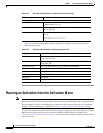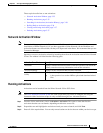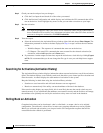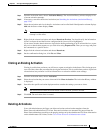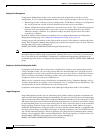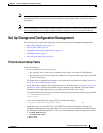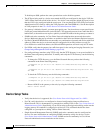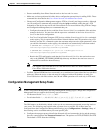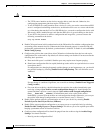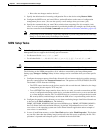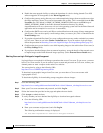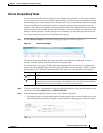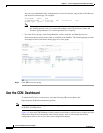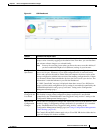
4-4
Cisco Prime Network 4.0 User Guide
OL-29343-01
Chapter 4 Device Configurations and Software Images
Set Up Change and Configuration Management
To disable port 8080, perform the same operation but use the disable argument.
• The SCP port being used by a device must match the SCP port configured in the device VNE (the
VNE is Prime Network's model of the device). If a device is not using the default SCP port, be sure
that the VNE is also configured with the correct port. You can change the VNE's SCP port from the
Administration GUI client by editing the VNE properties (the Telnet/SSH tab). See the description
of VNE properties in the Cisco Prime Network 4.0 Administration Guide.
• If a gateway is behind a firewall, you must open special ports. You do not have to open special ports
if units are located behind firewalls (and with NAT). This approach prevents issues when the unit is
behind NAT, as the unit does not require a publicly available IP address for the gateway to contact it.
• SNMP read-write community in Cisco Prime Network Administration must match that on the
devices. Make sure that pop-up windows are enabled on the Firefox and Internet Explorer browsers.
• For IPv6, CM and NEIM functions run smoothly on a combination of network and devices with IPv6
addresses. Either the device or the unit must be configured with an IPv6 address to work. For
Cisco IOS devices with IPv6 address, the CM and NEIM operations will work only in FTP mode.
• For NEIM, verify that the gateway has sufficient space for the storing and staging directories (see
Change Image Management Global Settings, page 4-66).
• For config and image transfers using TFTP, verify that the TFTP directory is set up and available in
the Prime Network gateway and/or unit. To modify and verify the TFTP directory, run the following
commands:
–
To change the TFTP directory, go to the Prime Network directory and run the following
commands in the Prime Network gateway:
./runRegTool.sh -gs 127.0.0.1 set <GW/Unit IP> avm83/services/tftp/read-dir
tftp
dir name
./runRegTool.sh -gs 127.0.0.1 set <GW/Unit IP> avm83/services/tftp/write-dir
tftp
dir name
–
To check the TFTP directory, run the following commands:
./runRegTool.sh -gs 127.0.0.1 get <GW/Unit IP> avm83/services/tftp/read-dir
./runRegTool.sh -gs 127.0.0.1 get <GW/Unit IP> avm83/services/tftp/write-dir
–
Restart AVM 83 in the gateway or the unit, by using the following command:
anactl -avm 83 restart
Device Setup Tasks
• Verify that the device is supported. See Cisco Prime Network 4.0 Supported Cisco VNEs..
• For CM, verify that devices are configured to forward configuration change notifications to
Prime Network. This is documented as a prerequisite to adding VNEs, in the Cisco Prime Network
4.0 Administrator Guide. (Specifically, if you will be using event-triggered archiving, make sure the
logging gateway-IP command is configured on all devices. This command should have been
configured as a prerequisite to adding VNEs to Prime Network.)
• Simple Network Management Protocol (SNMP) read-write community must be configured on
devices. For more information on configuring SNMP community strings for devices, see the
Cisco Prime Network 4.0 Administrator Guide. SNMP read-write community in Cisco Prime
Network Administration must match that on the devices.



